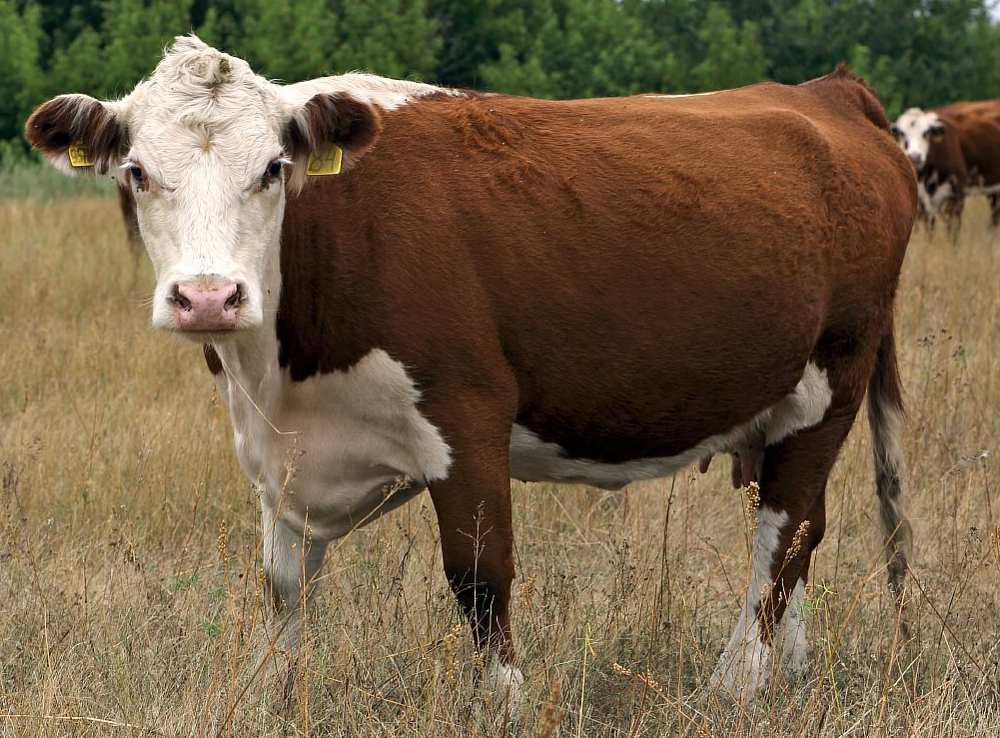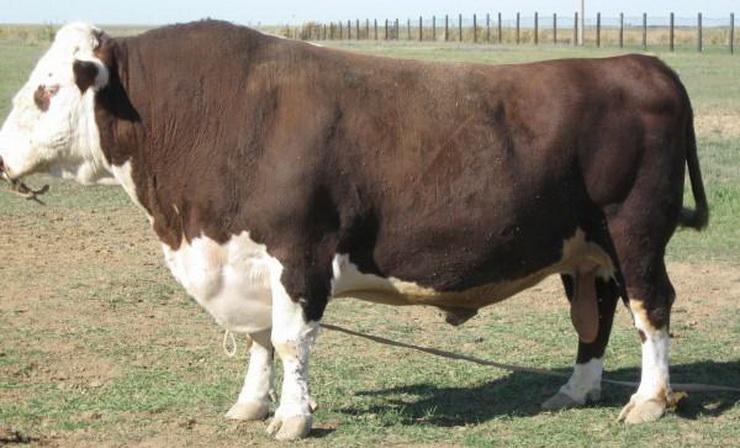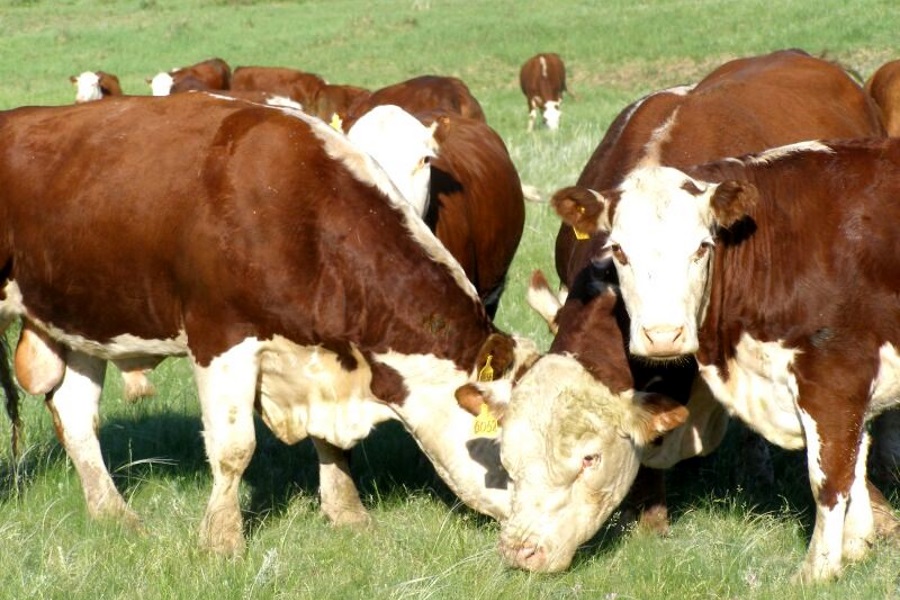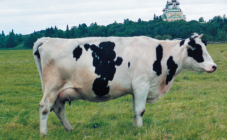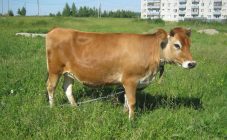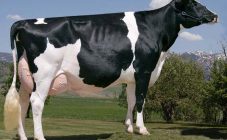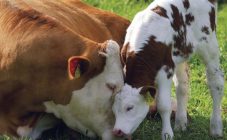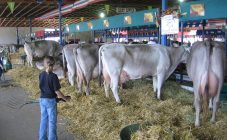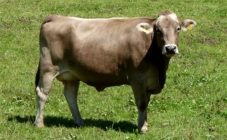Content:
The Kazakh breed of cows deserves the attention of amateur livestock breeders who have decided to purchase beef cattle. This cattle is characterized by fast weight gain, unpretentiousness in food and maintenance. In addition, the animals are calm, fertile, healthy.
History of the creation of the breed
As the name implies, the white-headed cattle breed was bred by the scientists of Kazakhstan. It happened in the middle of the last century. Local and Kalmyk cows were used for breeding experiments, as well as the famous Hereford breed from England. Despite the fact that the local breeds were more of the dairy type, they gave milk in limited quantities. There was not much meat from them either. The point is in the steppe area with sparse vegetation. The result is a kind of cattle that outwardly duplicates the Herefords. People who saw animals for the first time could not immediately understand that these were not beef cattle of English selection.
In fact, the breed of the new generation has taken only the best from its parents. Meat productivity, external characteristics turned out to be from the Hereford breed, endurance, strong immunity, resistance to weather changes, the ability to gain weight from pasture - this was received by new individuals from Kazakh and Kalmyk animals. For their work, the breeders were awarded the State Prize of Kazakhstan. The Kazakh white-headed breed of cows glorified the republic. Experts from all over the world came there to personally see the developments and exchange experiences.
Description
Exterior
The animals are barrel-shaped, muscular, with a massive head. The muscle frame is strong. Height at the withers - 130-140 cm. Body length - 150 cm. The chest in girth can reach 185-195 cm, which is typical for meat representatives. The bib is massive, developed. In bulls, the chest has a distinct protrusion. The build is stocky. Legs are short, strong, firm.
The color directly resembles Hereford. The muzzle and part of the head are white. Light areas in the form of elongated spots are present on the abdomen, sternum, limbs, and tail. The rest of the cover is brick brown. Other shades of red are also allowed.
Skin features
The skin is elastic and dense. Its peculiarity is to quickly accumulate subcutaneous fat, as well as to quickly lose weight. The accumulation takes place before the cold weather. Thanks to this line, animals can easily endure severe winters, temperature changes, and do not get sick.
A warm fur coat helps the animals protect themselves from frost. The wool cover, like elastic skin, has its own unusual ability. In summer, the coat is smooth, shiny, short, like that of ordinary livestock. But before winter, the pets are actively molting. As a result, in cold weather, they have an elongated shaggy coat. In some individuals it is curly, in others it is straight.
Specifications
- Kazakh white-headed cattle are rapidly gaining weight. By 7-8 months, the bull weighs about 300-450 kg. By 1.5-2 years, its weight approaches 700-900 kg. An adult cow weighs about 500-650 kg.
- Bulls are slaughtered at the age of 2-2.5 years.
- The yield after slaughter ranges from 55% to 73%. A high rate of pure meat gives a bull that has been castrated. A low rate was noted in cows.
- Cattle fertility is high. Sexual maturity occurs in females at about 9 months to 1 year. Males are ready to reproduce at 17 months.
- Pregnancy is easy and lasts 9.5 months. With proper care, livestock can breed for 10-13 years.
- Even in spite of the meat direction, heifers give milk. For one lactation, the hosts receive about 1-2 tons of product. Its fat content is 4%.
- The meat is tasty and juicy. Like the Herefords, the beef is marbled.
- The average life expectancy of pets is 18-24 years. Domestic individuals live the longest.
- The breed is bred in Kazakhstan, Ukraine, post-Soviet countries, central Russia, the Urals. Samara, Saratov, Orenburg climates are also suitable for these animals.
Breeding and care
The Kazakh white-headed breed of cows, whose characteristics contain information about unpretentiousness, can really survive in the most difficult conditions. But in order to obtain quality products, it is necessary to organize competent conditions of detention.
Dwelling
The peculiarity of animals is in the love of freedom. Therefore, it is best not to keep them in small stalls. The best dwelling in the warm season is an open corral. In winter, animals are transferred under the sheds. The main thing is that each individual has an insulated bedding. It is made from hay, straw and sawdust. A new layer is added to the litter every 2 days. The old layer is cleaned, if possible, but not removed.
Feeding
The breed justifies its direction and is gaining mass very quickly. In the summer season, the weight increases due to pasture. As soon as it gets warmer outside, vegetation appears, the animals are driven out to pastures.
In addition, the summer ration of animals contains concentrates, compound feed, grain crops, and root crops. Usually such food is intended for:
- Cows giving milk;
- Newly born calves;
- Bulls that are raised as producers.
In winter, pet food is varied. Among the required products:
- Silage;
- Straw;
- Roots;
- Vegetables;
- Potatoes;
- Concentrates;
- Cereal mixes.
The owners always provide salt, bone meal, feed phosphates. After calving, females receive sugar beets, carrots.
Walking
Free-loving animals are not suitable for walking on a leash. They behave very peacefully and are able to walk with herds in green fields and meadows. To get food, pets sometimes walk several tens of kilometers a day.
Benefits
- The Kazakh white-headed, like other Kazakh and Kalmyk breeds, is unpretentious in food. Most of the diet is made up of plants that she finds in pastures.
- Cattle spends all warm seasons in fields and meadows.
- Animals are distinguished by their ability to do without water for a long time.
- Intense mass gain from birth. In this way, the breed resembles Shorthorn, Galloway, etc.
- Like the Herefords and Charolese representatives, the white-headed one has tasty, not dry meat. Beef belongs to the marble type.
- Thanks to the skin, which is able to quickly store fat, the cattle does not lose weight even with constant long-distance walkings.
- The Kazakh white-headed, like the Aberdeen-Angus, feels good both in warm climates and in cool ones. Quickly adapts to new conditions.In addition, a white-headed woman grows thick wool when cold weather approaches.
- A big plus of this type of cattle is not too high a cost, compared to other bulls and cows. The price starts from 130-180 rubles per kilogram. For example, for a purebred Hereford, the owners ask for 300-500 rubles per kg.
disadvantages
- Skeletal bones too narrow. They limit the maximum mass gain. For example, such as the Belgian blue breed, whose representatives eat up to 1-1.2 tons.
- An increased fat content of the meat yield is often observed. This is a significant disadvantage for the taste characteristics.
- The behavior of cows changes after calving. They become aggressive and too attached to their offspring. In this they resemble the Aberdeen Angus, Simmental breed.
Recommendations from veterinarians
- It is important to respect the life cycles of the cows. It is recommended to inseminate them in late spring, early summer.
- It is better not to remove the calf from the mother until he is a month old. Mother's milk boosts immunity.
- Pens and covered barns should be promptly cleaned and rodent-free.
- The breed has strong immunity, but this does not negate the vaccination of pets.
An economical breed suitable for breeders who are just starting to breed cattle. There will be no difficulties with the Kazakh white-headed woman. The animals are calm, unpretentious. You can get enough meat from them (55-77% of the mass). However, the preferences of livestock should be taken into account - he loves free grazing and spacious corrals.
